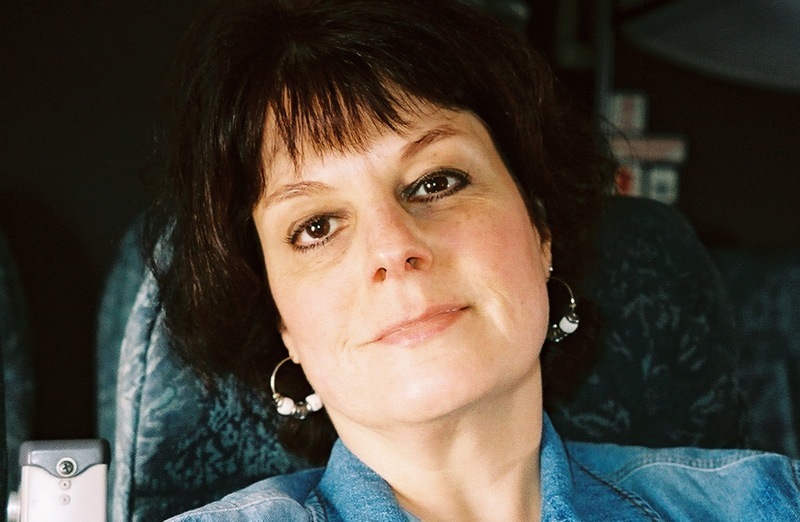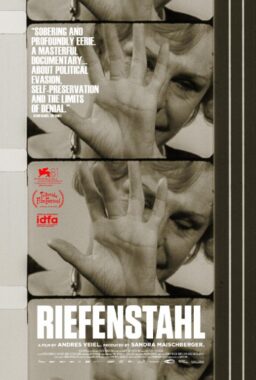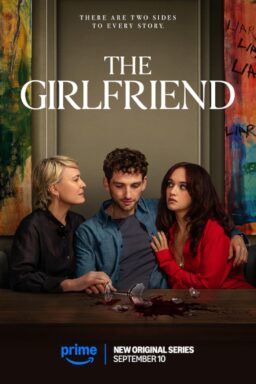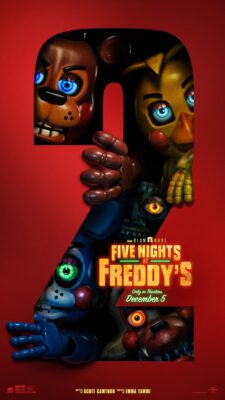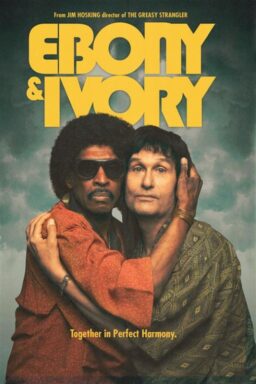In its 90th year of celebrating the best in cinema, the Oscars widened its embrace and chose to go beyond business as usual when deciding which talents made the cut as nominees for 2017 films.
Not only does “A Fantastic Woman”—Chile’s entry in the foreign-language category—showcase mesmerizing trans actress Daniela Vega in almost every scene. But Yance Ford, the trans male director of documentary feature contender “Strong Island,” is the first transgender filmmaker to compete for an Academy Award.
Among racial strides: Jordan Peele is the fifth black Best Director nominee ever for “Get Out,” and Dee Rees, the first black woman to be up for Best Adapted Screenplay as the co-writer of “Mudbound.”
All these are welcome signs of progress when it comes to inclusivity. But having a fifth female filmmaker crash Oscar’s gold ceiling in the Best Director category this year is a much-needed vindication of sorts given recent revelations tied to the #MeToo and #TimesUp movements. That accused sexual predator Harvey Weinstein vindictively stalled the careers of many women who rejected his overtures or fought back makes this landmark even more meaningful.
Not that Greta Gerwig’s solo filmmaking debut, the rapturous coming-of-age comedy “Lady Bird,” needed the backing of a cause to make the cut. But her achievement benefits from some bonus wind beneath her Best Picture contender’s wings, thanks to the outcry over a disgraced male movie mogul who aggressively re-shaped the art of awards season campaigning for better but also for worse.
That got me thinking: Why did the now-five female nominees for Best Director become the chosen ones so far, given how difficult it is for any female director to be hired over her male peers? After all, women helmers were behind only 8% of the last year’s 100 top-grossing films. Talent and tenacity certainly comes into play. Also, the right personality is a plus. Connections don’t hurt, either, especially shared with powerful men. But something tells me the cultural atmosphere of each era played a part, too—as well as what happened to their careers beyond the Oscar spotlight. Let’s take a closer look:

Italian Provocateur: Lina Wertmuller
Who, what, when: In America’s bicentennial year of 1976, somehow a 47-year-old Italian art-house auteur with a penchant for flashy white-rimmed eyeglasses and on-screen gender clashes involving sex and politics, was lauded for her World War II concentration-camp picaresque “Seven Beauties.” The ‘70s was a transitional film period, where gritty social commentary co-existed with escapist populism. As a result, Wertmuller was up against the likes of veteran Sidney Lumet (the vitriolic “Network”) and John A. Avildsen (who won for the feel-good “Rocky,” the Best Picture champ).
Connections: Her mentor was no less than Federico Fellini, who picked her as co-director on his 1963 surreal masterpiece “8 ½,”which would win the foreign-language Oscar. Wertmuller made her solo directing debut the next year with “The Lizard.” Just as Fellini used actor Marcello Mastroianni as his muse, she would recruit Giancarlo Giannini, who would earn a lead actor nom for “Seven Beauties” for his craven anti-hero. He appeared in eight of her big-screen efforts, including 1972’s “The Seduction of Mimi” and 1974’s “Swept Away.” The later, a sado-masochistic sex romp precursor to “50 Shades of Grey” about spoiled rich woman tamed by a lowly sailor while shipwrecked on an island, would be remade—some might say mangled—by Guy Richie in 2002 with then-wife Madonna and Giannini’s son Adriano.
Oscar upshot: That year, Wertmuller was declared “the hottest name in movies today” by the New York Daily News and drew enthusiastic crowds to art-houses. Consider that while she made history by storming a category that had historically only featured men, Martin Scorsese—whose bloody urban nightmare “Taxi Driver” was up for four Academy Awards, including Best Picture—did not make the cut. Besides in the category of Best Director, “Seven Beauties,” which benefitted from its Holocaust theme, also earned nods for Best Actor, Best Foreign Language Film and Best Original Screenplay.
Post-Oscar: Wertmuller signed a four-picture deal with Warner Bros. The result was her first English-language movie, “A Night Full of Rain,” starring Candice Bergen and Giannini. Alas, her magic did not translate without subtitles, although she continued to make films through the early 2000s. The director, who turns 90 this year, is the subject of a recent documentary, “Behind the White Glasses.”

Kiwi Queen: Jane Campion
Who, what, when: The 39-year-old New Zealand outlier who redefined “women’s films” with her erotically raw and unvarnished depictions of femme fortitude and sexuality, became the second distaff director to make the cut with 1993’s “The Piano.” Campion fought her way into the race via the festival circuit—she remains the only female filmmaker to win the Palme d’Or (shared with “Farewell, My Concubine”) at Cannes, where the romantic drama earned a seven-minute standing ovation. The ‘90s turned its back on the previous decade’s sprawling epics such as “Out of Africa” and “Gandhi” by turning to more intimate period pieces. While Scorsese’s The Age of Innocence” and James Ivory’s “The Remains of the Day” were studies in repression, Campion’s mid-19th-century triangle between Holly Hunter’s mute mail-order bride, her stern wealthy husband Sam Neill and Harvey Keitel’s lusty native was an erotically charged rumble in the jungle of New Zealand’s North Island.
Connections: It was Campion’s actress mother and theater director father who originally put her in touch with the world of the arts. After getting a B.A. in anthropology, she originally studied painting as a post-graduate before switching to short films. At college, she would meet one of her most invaluable collaborators, producer Jan Chapman, who offered Campion her first job, a 1986 Australian TV film. After reading a short treatment of “The Piano,” she told Campion, “I will die if I cannot make this film.”
Oscar upshot: Steven Spielberg’s “Schindler’s List” dominated the 66th Academy Awards, claiming the prizes for Best Picture and Best Director along with five others. But Campion, the first female director to have a Best Picture candidate, managed to make a statement with her three wins. Besides a win for her screenplay, Campion’s leading lady Holly Hunter and her 11-year-old discovery, Anna Paquin, were rewarded in the actress categories for the same film—a situation that has happened just 10 times.
Post-Oscar: Little wonder that other brand-name actresses were eager to work with Campion, including Nicole Kidman in 1996’s “A Portrait of a Lady,” Kate Winslet in 1999’s “Holy Smoke!” and Meg Ryan in 2003’s “In the Cut.” In 2013, Campion switched to TV with the mystery drama miniseries “Top of the Lake,” starring Elisabeth Moss of “Mad Men” as an Australian detective and Hunter as a spiritual adviser for troubled women. A 2017 sequel, “Top of the Lake: China Girl,” added Kidman to the cast.

Tinseltown Princess: Sofia Coppola
Who, what, when: This charter member of a Hollywood dynasty led by dad Francis Ford Coppola of “Godfather” fame managed to carve out her own big-screen niche with gauzily-lit, beautifully appointed and emotion-driven stories about women struggling to find their places in the world. At age 31, she would become the third and youngest female director to compete for an Academy Award with 2003’s “Lost in Translation,” a tender travelogue about homesick strangers who meet in Tokyo starring Bill Murray and Scarlett Johannson. The bad news? It was the year that Peter Jackson’s “Return of the King,” the final chapter in “The Lord of the Rings” trilogy, monopolized the evening with a sweep of 11 wins.
Connections: It is probably for the best that scathing reviews for her portrayal of Mary Corleone, daughter of mob kingpin Michael, in 1990’s “The Godfather III” encouraged her to go behind the camera instead. Coppola found her most frequent muse by casting 16-year-old Kirsten Dunst as the lead in her helming debut, 1999’s “The Virgin Suicides.” Dunst would also appear in 2006’s “Marie Antoinette” and last year’s “The Beguiled.” Other industry-related family ties include mother Eleanor, who made her feature directing debut last year with “Paris Can Wait”; aunt Talia Shire; and acting cousins Nicolas Cage and Jason Schwartzman as well as ex-husband and fellow director Spike Jonze.
Oscar upshot: Beyond Best Director, “Lost in Translation” was nominated for Best Picture and Best Actor, and won Best Original Screenplay. The rest of the evening was dominated by Peter Jackson’s Middle Earth epic save for the acting categories. Still, Coppola could find consolation in the fact that her indie film took in $120 million worldwide without a single orc being slayed onscreen.
Post-Oscar: Coppola’s divisive third feature, “Marie Antoinette,” drew boos at Cannes as well as a standing ovation. She was on more familiar ground with 2010’s “Somewhere,” about a spoiled hotshot movie actor (Stephen Dorff in a comeback role) who suddenly must parent his 11-year-old daughter (Elle Fanning). Coppola would become the first American woman to win the Golden Lion at the Venice film festival. Next came 2013’s “The Bling Ring” with Emma Watson putting her “Harry Potter” image behind her as part of a real-life gang of California kids who robbed the homes of celebrities (Dunst, an actual victim, made a cameo). 2017’s “The Beguiled” was a change of pace from Coppola’s usual routine—a remake of a 1971 gothic Civil War drama that starred Clint Eastwood as an injured Yankee soldier held captive by teachers and students at a Southern school for girls.

Action Specialist: Kathryn Bigelow
Who, what, when: A clear-eyed visionary drawn to muscular, no-punches-pulled genre films who, some would say, directs masculine-style fare while displaying the sharp-eyed instincts of a woman—though Bigelow is steadfastly against defining herself in any gender terms. At age 58 and after three decades of filmmaking experience, Bigelow became the fourth woman deemed worthy to compete for a directing Oscar for her 2009 Iraq War thriller “The Hurt Locker.” It was also a more expansive year, with the Best Picture category expanding to a varied group of 10 competitors—the better to draw more and younger eyeballs. The titles ranged from the sci-fi mega-hit “Avatar” and the Pixar animated feature “Up” to the tear-jerking sports drama “The Blind Side” and the female coming-of-age tale “An Education.”
Connections: Though she originally studied painting, Bigelow earned a master’s degree from Columbia University’s film program and her 1978 student short “The Set-Up” featuring two men fighting caught the eye of Milos Foreman, who was teaching at the school. Her varied resume of full-length includes a 1987’s vampire Western “Near Dark,” 1991’s surfer-dude crime caper “Point Break,” 1995 sci-fi thriller “Strange Days” (co-written and produced by ex-husband James Cameron) and Cold War submarine thriller “K-19: The Widowmaker” starring Harrison Ford and Liam Neeson. For “The Hurt Locker,” Bigelow teamed with journalist, screenwriter and producer Mark Boal for the first time.
Oscar upshot: If the Academy wanted a ratings-grabber of a showdown, they got one what with the press bent on pitting Cameron’s visually stunning Goliath of a blockbuster, “Avatar,” considered the highest-grossing movie of all time with nearly $3 billion worldwide, against former spouse Bigelow’s modestly budgeted but more narrative-forward “The Hurt Locker.” They tied for the most nominations with nine. While “Avatar” made do with three technical wins, “The Hurt Locker” grabbed six trophies, including Best Picture. Most importantly: Bigelow made history as the first woman to win Best Director.
Post-Oscar: Bigelow worked with Mark Boal again for “Zero Dark Thirty,” about the nearly decade-long hunt for Osama bin Laden after the 9/11 attacks. The procedural thriller starring Jessica Chastain as a fictional CIA operative opened to great acclaim and took in more than $132 million in worldwide ticket sales. The film would go on to be nominated for five Oscars, including Best Picture but not Best Director. Controversy over the depiction of water-boarding torture techniques during interrogations defused most of its Academy chances save for a tie with the James Bond film “Skyfall” for Best Sound Editing. Last summer’s “Detroit,” a violent re-creation of the 1967 race-related riots in the Motor City, drew criticism over white filmmakers like Bigelow and Boal telling a story primarily about African-American issues. Despite a majority of positive reviews, weak box office dulled any chances for awards attention.
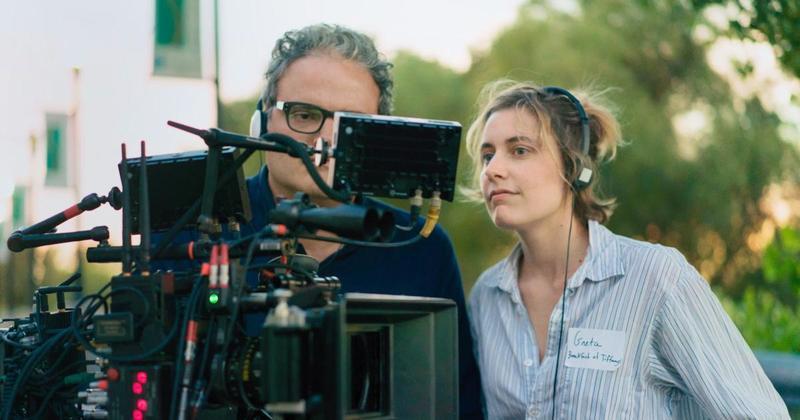
So what does Greta Gerwig have in common with this gang of four? For one, most of them double as screenwriters who produce their own original material. For another, this Mumblecore poster girl originally wanted to be a playwright, but she was not accepted to any playwriting master’s programs. Instead, she turned to acting, working with such indie filmmakers as Joe Swanberg (she would co-write, co-direct and star in 2008’s “Nights and Weekends”) and Jay and Mark Duplass and basically learned filmmaking on the job, asking questions in between takes. She then worked with filmmaker Noah Baumbach, her current boyfriend, and starred opposite Ben Stiller in 2010’s “Greenberg.” They would co-write 2013’s “Frances Ha” and 2015’s “Mistress America,” with Gerwig in the lead.
But unlike the other ladies on this list, Gerwig, 34, had the benefit of actually having been directed by a woman filmmaker—namely Rebecca Miller, who oversaw the actress’s performance in 2015’s “Maggie’s Plan.” As Gerwig told Entertainment Weekly last month when nominations were announced: “It was something about watching her and watching her realize her movie that I thought, ‘It’s time, it’s time. Look at her! You can do this!’”
